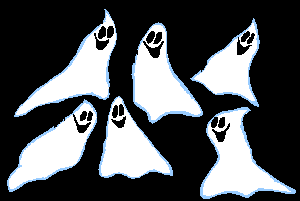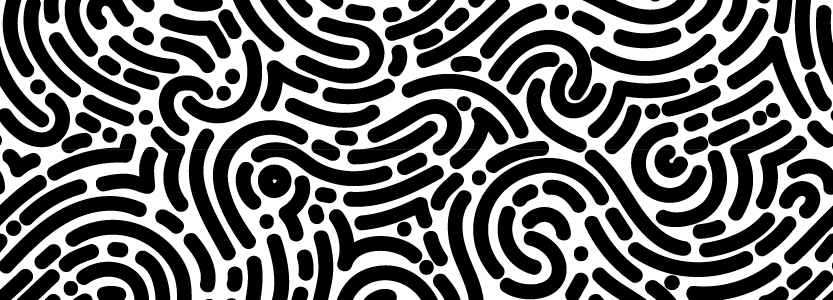VII. Ghosts
Any experience of the past is made by the image.
If historians sometimes seem to have forgotten this, it is because it is much easier to work on this encoding of memory that is writing, than to confront images. What a strange incarnation of the past the image is, indeed! By its very existence, it produces the present, the future past, at the same time as it resurrects a bit of yesterday, in a way that is always different according to the people and the contexts that perceive it; and by this it also gives birth to the present. The image, with its strange mixture of temporalities, continues to be a headache for theorists. Beyond its material support (painting, illustration on a page of paper, photograph on a screen), and even after the disappearance of the support, there something imanent about images, something that survives even after its materiality is gone.
This survival beyond its material support incites the specialist of the visual studies W. T. Mitchell to differentiate the material image picture [1], and the image which can survive it and precede it in more or less numerous reincarnations. These reincarnations are played out in various media as well as in individual and collective memories.
The Visual Contagions project is permanently confronted with this phenomenon. We work on the circulation of images whose originals have generally disappeared, but whose avatars multiply from one magazine page to another. We constantly measure, in the groups of similar images that our machines gather, the effects of an absent presence, past, present and future. It is like a spectre that haunts an era, sometimes for thirty years, sometimes for a century, and even up to the present day when it has penetrated our own imaginary museums.
What does this ghost convey? What does it blow? What does it reveal? What does it do to us? And what do thousands of ghosts convey? What are the effects of their coexistence?
These are questions that we are constantly asking ourselves, and which we wanted to confront in order to close the exhibition at the same time as the year 2022 is closing.
The visual context of autumn lends itself to these questions, as All Saints' Day approaches. At the time of writing, store windows are adorned with spider webs. Pumpkins, skulls and witches' hats are multiplying.In Europe, local culture lovers, who don't know that Halloween comes to us from Catholic Ireland, complain about the American import of the holiday. But many children wonder if they will be able to go trick-or-treating like in the movies, and shopkeepers are happy to see, perhaps, a little increase in their turnover in this period of crisis... We live, at this moment, by the images and the objects which surround us, and by these disguises where we make ourselves image, in the heart of a phenomenon of world circulation and visual contagions.

--
As Halloween approaches...
The more diverse the form of resurgence of the image is, the greater its effectiveness.
But the more difficult also is its analysis.
Can we make a hauntology of the deluge of images?
The Visual Contagions project is interested in the circulation of images, their reciprocal contaminations, their crossbreeding and their survival. It confronts a permanent coming and going between condensation and evanescence, between presence and absence, between advent and disappearance. Beautiful experience of this phenomenon that Jacques Derrida[2], even if he did not speak specifically about images but about "the specters of Marx", wanted to entrust to a science without method: hauntology. But can one make a hauntology of images by the millions?
Although without method, visual hauntology has given rise to numerous reflections. We must situate ourselves in relation to them.
Between the attention of the philosopher Giorgio Agamben on the image and the memory, which confers to the image a "messianic" status because it emerges as a "presence", goes out of the chronology to project us in the eschatology[3] ; the reflection of Georges Didi-Huberman on the "ghost images", commenting on the historian of the art Aby Warburg who studied the survival of ancient "passions" in European art [4] ; that of W. T. J. Mitchell, quoted above, on the difference between picture and image; and our own work on illustrations by the millions, where the spectres are in excess, it is appropriate to specify convergences and as well as divergencies.

Convergences:
Every time we analyze a group of similar images that have circulated from one magazine to another, we witness the return of a ghost. The work of the historian is to elucidate a little of the mystery that is being woven there; to understand where the ghost comes from, what it carries, reminds, denounces or celebrates. We tried it above about the .photograph of bust, the images of the Virgin and the Child; or the images of the automobile which ended up possessing our century, explaining for a part our difficulties to leave the anthropocene. There are many other images to study. Here we take a somewhat distant look at the main visual ghosts of the first 20th century.
These ghosts that haunt the illustrated periodicals of the first XXth century, we study them most often from the suggestions of our machines: groups of images brought back because they are more numerous and have circulated more than the others. Some of the images in question have disappeared, and are no longer part of what we would designate as world images. So we wanted to take the question in reverse, from the present to the past: to choose images considered today as global, and to observe, with the help of our algorithms, their possible provenance.
For this chapter, we are interested in the imaginary globalized Halloween museum. Where do these images come from? Can we assess how they are the result of the mixture of motifs from different countries and traditions?
Our impression of Halloween is that the visual corpus of this holiday has become globalized because it has been able to assimilate images from - or be assimilated by - many different regions, narratives and sensibilities. If the witch seems to be more of a North American import than a European one, hardly to be found in the magazines of the old continent, the spectres of the evil eye and the black cat carry the haunting of anxieties that have been present since early modern times - often more funny than terrifying -, while the motif of the skeleton refers as much to death as to the ancient iconography of medicine.

--
The skeleton and its avatars, from the VisualContagions/Explore search algorithm
Divergences:
Image theorists work on very specific spectra: an image (the Birth of Venus), a theme (Marx, the revolution...), a medium (painting, photography...), a narrative (the Shoah).
We had the (bad?) idea to choose a diluvian object of study, which overflows any intellectual enterprise; but also to arm ourselves, to resist this deluge, with algorithm which also produce their own ghosts.
Three main problems preoccupy us, in the abundance of the images (and of their ghosts) circulating here.
(1) The method chosen to put some order in our clusters forces us to make atlases.
We have programmed our machines to display thousands of images in grids, ordered in time and space. From the first display of these atlases, appeared the ghost of Aby Warburg, the art historian known for working with atlases.
Aby Warburg's Mnemosyne Atlas is a shadow whose guardianship we must handle with the utmost care and attention.
(2) It is a mass of ghosts that occupies us. When they intersect, they can mutate, hybridize or associate.
The anachronisms tangle, the interferences multiply between images of the past of the past, images of the present of the past, images of the future of the past, ghosts of yesterday, and ghosts of today since the images of the past are also part of contemporary hauntings. Should we just let the spectres howl and overwhelm us? A simple hauntology does not seem to be enough. We need to think (and illustrate with concrete examples) the phenomenon of hauntings in the plural, to understand what happens when specters interfere. A few examples can help, such as the images of Dracula. Some specters prefer to haunt certain geographies rather than others. How does a ghost manage to enter a new home? How does it become acculturated to the new context, how does it change it, and are the spectres that haunted the home before it welcomed?
(3) The algorithms we work with are constantly bringing up new spectres.
They may suddenly appear, or disappear. But even if we know that they are only algorithms, impersonal code, we can never get rid of the impression that these algorithms think, dream, play without and in spite of us. In a past episode, we let them have fun at our expense (see our chapter on hoaxes). This fall, we ask ourselves what algorithms dream about, what they fear - and what we project onto them that would come from our own anxieties.

[1] W.J.T,Mitchell, Iconologie: image, texte, idéologie, Paris, Les Prairies ordinaires, 2009, p. 21.
[2] Jacques Derrida, Spectres de Marx, Paris, Galilée, 1993.
[3] Un beau commentaire du travail d’Agamben sur les images : « Soudain, les fantômes théologiques de l'image vinrent à ma rencontre », par Tristan Trémeau, L'Art Même, 27, 2e trimestre 2005, http://mickfinch.com/texts/soudain.html, consulté le 15 mars 2022.
[4] Georges Didi-Huberman, L’image survivante: histoire de l’art et temps des fantômes selon Aby Warburg, Paris, Minuit, 2002.

